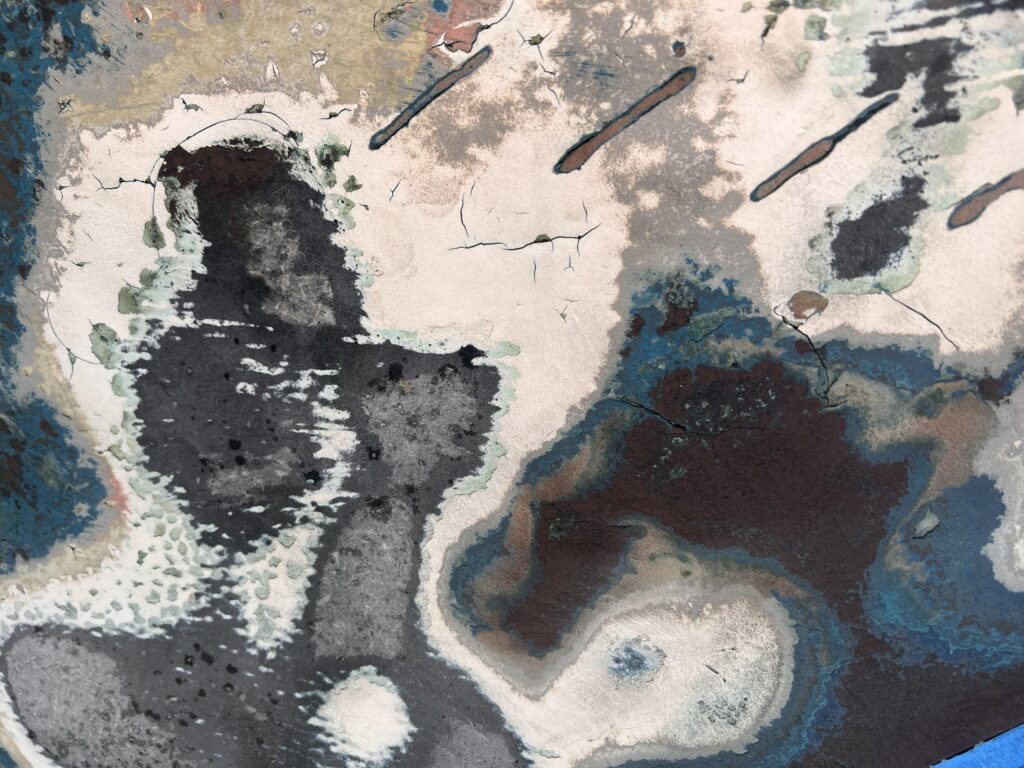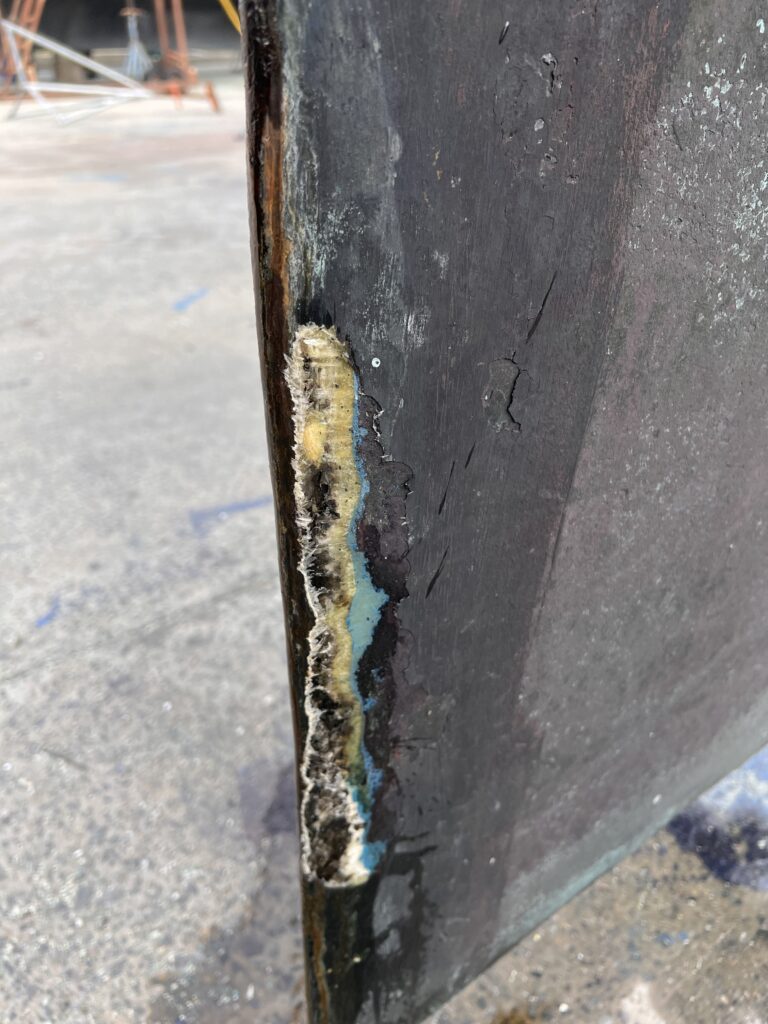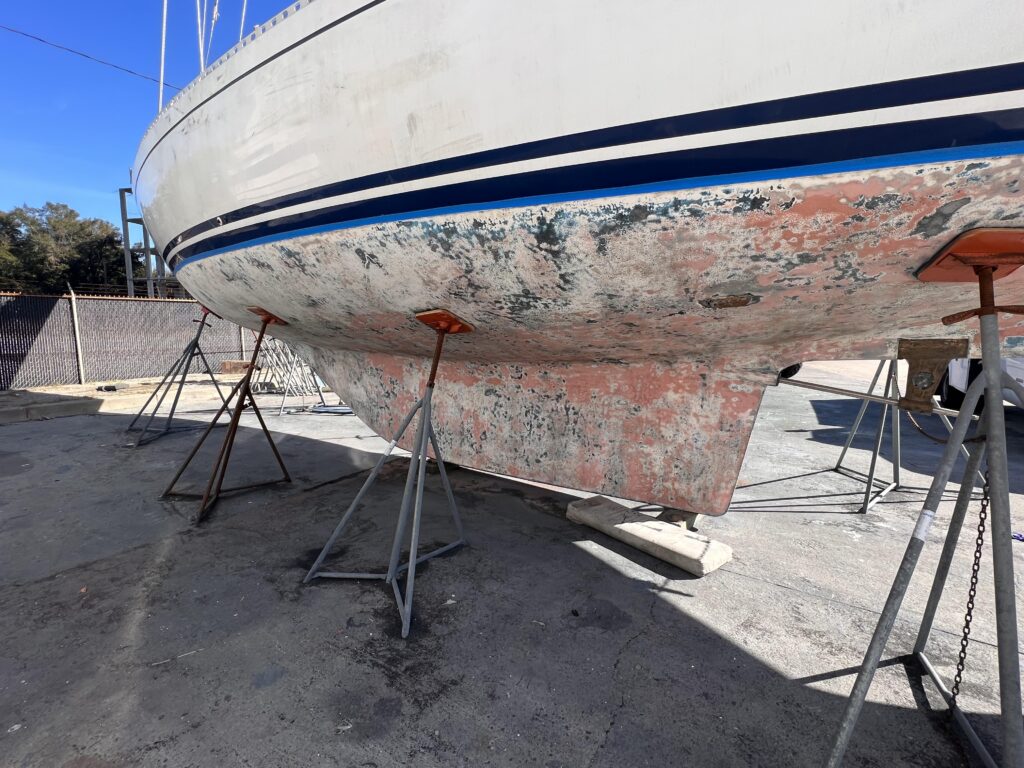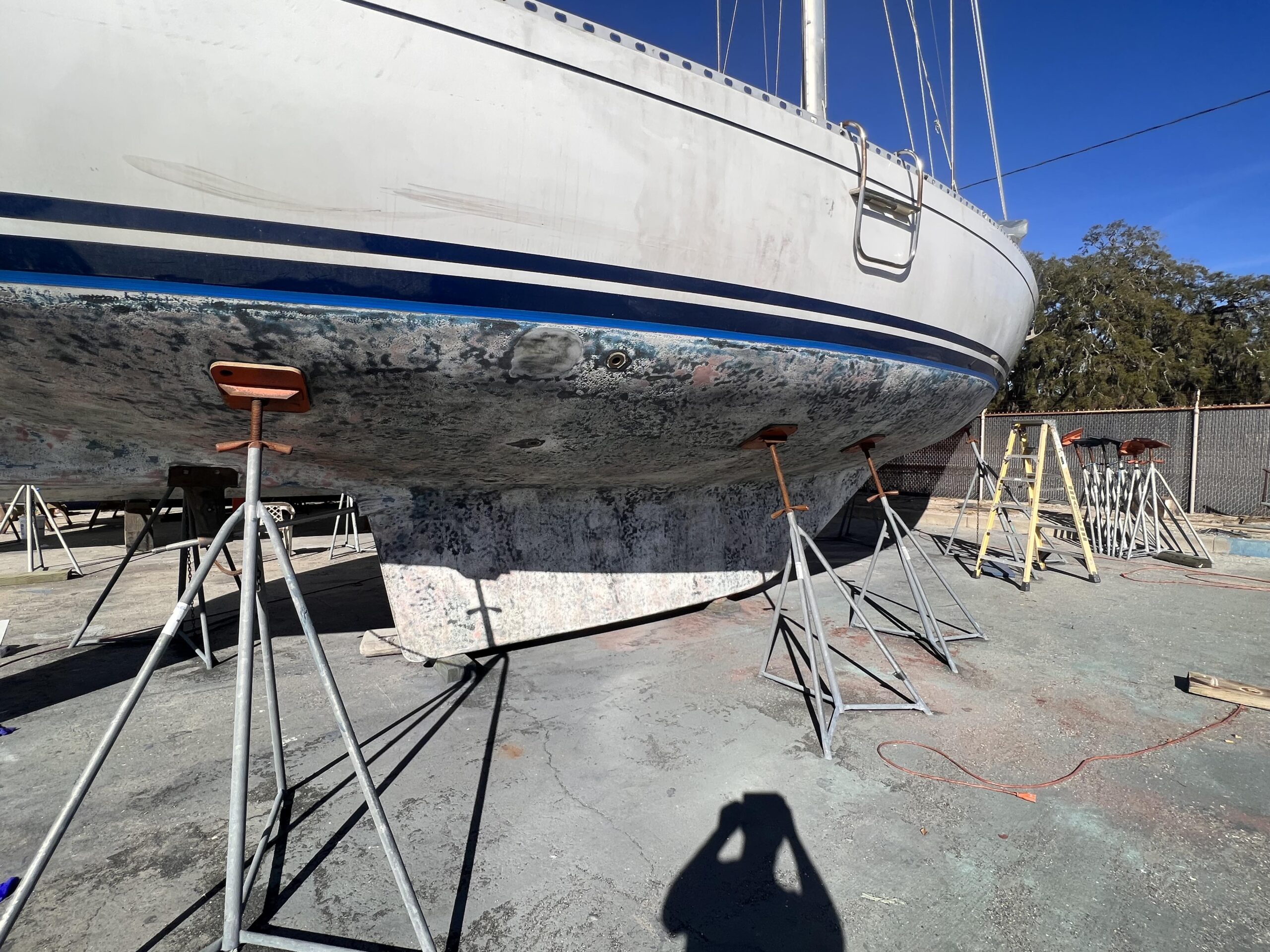Can we talk?
Kim and I have come to hate those words.
Because those are the words that our project manager uses when things aren’t going as expected.
Work had started on Meraviglia. The yard moved her from the storage area to the work area.
Step 1: Paint the Bottom.
On the survey, her hull looked good: no blisters, paint in good shape. So a light sand and some new paint and we should be good to go.

“Can you talk?”
Sigh. “Sure.”
Greeeeeaaaaatttt.
“They guys started sanding the bottom and the gel coat is just falling off as they sand. And the rudder is full of water.”
We knew the gel coat could be an issue in an older boat, but it looked good on first inspection. Unfortunately, it wasn’t. It would all have to come off. We had the bottom soda blasted down to bare fiberglass.

As for the rudder, it looked as if it had sustained damage at some point and the repair had not been done well-the trailing edge was delaminating, allowing water into the foam core. To repair that, the rudder core had to be opened up to allow it to dry and then new fiberglass laid up and faired to rebuild it to its original shape.
Foreshadowing: this is NOT the end of the tale…
So, now we had a sailboat hull of bare fiberglass. Step 1: apply barrier coat. Basically, we had the hull re-gel coated and then sanded fair. Step 2: new anti-fouling. But what to use?
There are, generally, four options:
- Traditional ablative anti-fouling. This is a copper-based, ablative paint. The copper is biocidal, keeping away things like barnacles and algae. The paint is called “ablative” because, over time, it gradually wears away, exposing new biocidal paint layers. The advantages to ablative anti-foul are that it is pretty effective and (relatively) inexpensive. The disadvantage is that it needs to be reapplied fairly often. This means hauling the boat out every 12-18 months, sanding, and applying new paint. The other problem is that it is harmful to marine life. The paint leaches copper into the oceans which is toxic not just to things that want to attach to your boat’s bottom, but to all other marine life as well.
- Traditional hard anti-fouling. This paint is also copper-based, but it does not wear away over time-it can be kept active by regular wiping by a diver without hauling the boat out of the water. An advantage over ablative paint is that it does not leach as much biocide into the water as ablative paint. The disadvantage is that it tends not to be as effective in salt water as fresh. It also needs fairly frequent re-application.
- Non-traditional anti-fouling. This is a solid paint that does not wear off. It works generally by making the hull super-slippery so that nothing can stick to it-it is commonly silicon-based. Its advantage is that it is non-toxic to marine life. Unfortunately, it doesn’t last any longer than traditional anti-foul and it’s more expensive.
- CopperCoat. CopperCoat is a product that has been around for about a decade. It is NOT paint. It is an epoxy-based resin impregnated with copper particles that is applied to the bottom. Because the copper essentially becomes part of the boat’s hull, it lasts much longer than bottom paints-about 10 years. And, although it does leach some copper into the ocean, it does so at far, far lower levels than traditional anti-fouling paint. The downsides are that it is more expensive up front and can be tricky to apply. However, although it’s more expensive, when one looks at the costs over a decade, it’s actually cheaper than the other bottom treatments. Another reason it is not more widely used is that it cannot be applied over existing bottom paint. In order to apply it, ALL existing bottom paint must be removed and the hull sanded to bare gel coat. For us, because we were down to bare glass, the cost of CopperCoat vs. barrier coat and then anti-fouling paint were pretty comparable.
Kim and I watched many YouTube videos titled “CopperCoat Disaster!!” before deciding we wanted to go with CopperCoat. Our project manager said that, although he had never done a CopperCoat application before, he felt it was doable. The yard also had no experience. Because everyone was going to be new to this (and because we were footing the bill), we decided we had better be on-site for the application. Can we time our visit to the application of the CopperCoat?? Of course….NOT! Stay tuned!


June 8, 2023 at 5:20 pm
Oh, no!!! Reminds us of sailing Uma. And look how your technical vocabulary is growing.
June 8, 2023 at 11:09 pm
Your boat has GRIT! You both have GRIT! Keep us posted!
June 9, 2023 at 2:33 pm
At the moment, the only “grit” is gritting our teeth and writing another check.
June 9, 2023 at 2:30 pm
And so begins the adventure to defy the old saying “buying a boat is like throwing your money into a hole in the water.”
June 9, 2023 at 2:33 pm
The old saying has not been defied. Not by any stretch of the imaginateion.